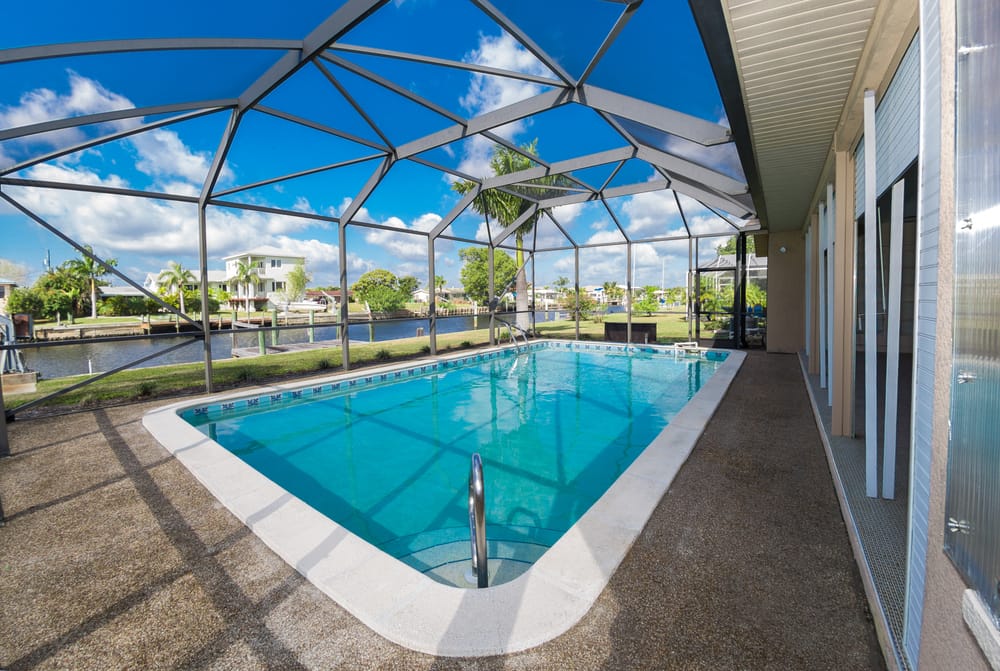Pool screen enclosures are a popular addition to residential properties that have swimming pools. These structures provide a number of benefits, including keeping insects and debris out of the pool area, providing shade and reducing sun exposure, and creating a more comfortable outdoor living space. If you are considering building a pool screen enclosure, it is essential to understand the materials commonly used to construct these structures.
The frame of a pool screen enclosure is typically made of either aluminum or steel. Aluminum is a popular choice because it is lightweight, durable, and resistant to rust and corrosion. It is also easy to work with and can be painted to match the color of your home. Steel is another option, although it is heavier and more prone to rusting if it is not properly coated. However, steel is a better choice if you want a more affordable option, as it is less expensive than aluminum.
The screens themselves are typically made of either fiberglass or polyester. Fiberglass screens are made by weaving together thin strands of glass fiber, which are then coated with a protective layer to help prevent them from becoming damaged or degraded over time. These screens are strong, durable, and resistant to most types of weather, including heavy rain and wind. They are also relatively easy to clean and maintain, and they can be replaced if they become damaged or worn out.
Polyester screens are made by weaving together strands of polyester fiber, which are then coated with a layer of PVC to help make them more durable and weather-resistant. These screens are typically more affordable than fiberglass screens, and they are often used in areas where insects are less of a problem. However, they may not be as strong or durable as fiberglass screens, and they may be more prone to tearing or becoming damaged over time.
In addition to the frame and screens, a number of other materials may be used in constructing a pool screen enclosure. For example, the roof may be made of polycarbonate panels, which are lightweight, durable, and resistant to UV rays. These panels can help to provide shade and reduce the amount of sunlight that enters the pool area, which can help to keep the water cooler and reduce the risk of sunburn.
The supports and connectors used to hold the frame and screens in place may be made of various materials, including plastic, aluminum, or steel. Plastic connectors are often used because they are lightweight and affordable, but they may not be as durable as metal connectors. Aluminum and steel connectors are both strong and durable, but they may be more expensive than plastic connectors.
Finally, there are some optional features that you may want to consider when building a pool screen enclosure. For example, you may want to include a door or gate to provide easy access to the pool area. These doors and gates can be made of the same materials as the frame and screens, and they can be designed to match the style and color of your home. You may also want to consider adding lighting or fans to the enclosure, which can help to make the space more comfortable and usable.
So now that you know, building a pool screen enclosure requires careful consideration of the materials used in its construction. The frame and screens are the most important components, and they are typically made of aluminum or steel and fiberglass or polyester, respectively. Other materials, such as polycarbonate panels, connectors, and optional features like doors and lighting, may also be used. By choosing suitable materials for your needs and budget, you can create a pool screen enclosure that will provide you with years of enjoyment and protection from the elements.
Poolside Screen Repair Inc specializes in top-quality screen repair services for your pool area. Our experienced professionals use the latest tools and techniques to repair, replace, and maintain screens for pools, patios, and lanais. We pride ourselves on our attention to detail, fast turnaround times, and exceptional customer service. Contact us today to keep your outdoor space free from unwanted pests and debris.



